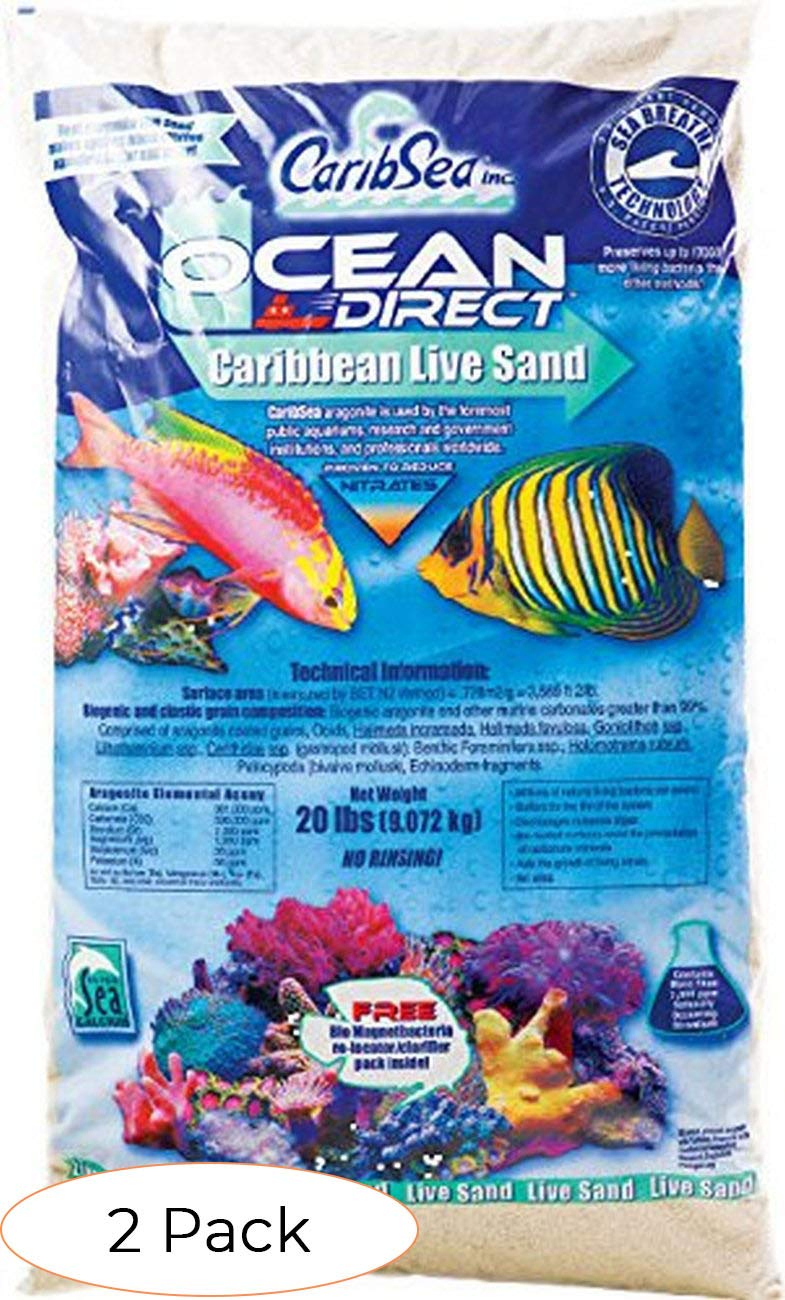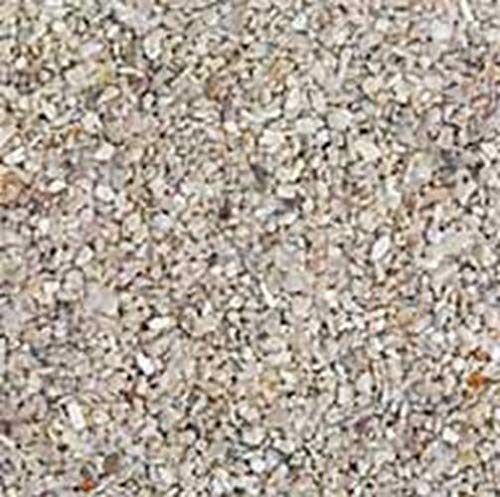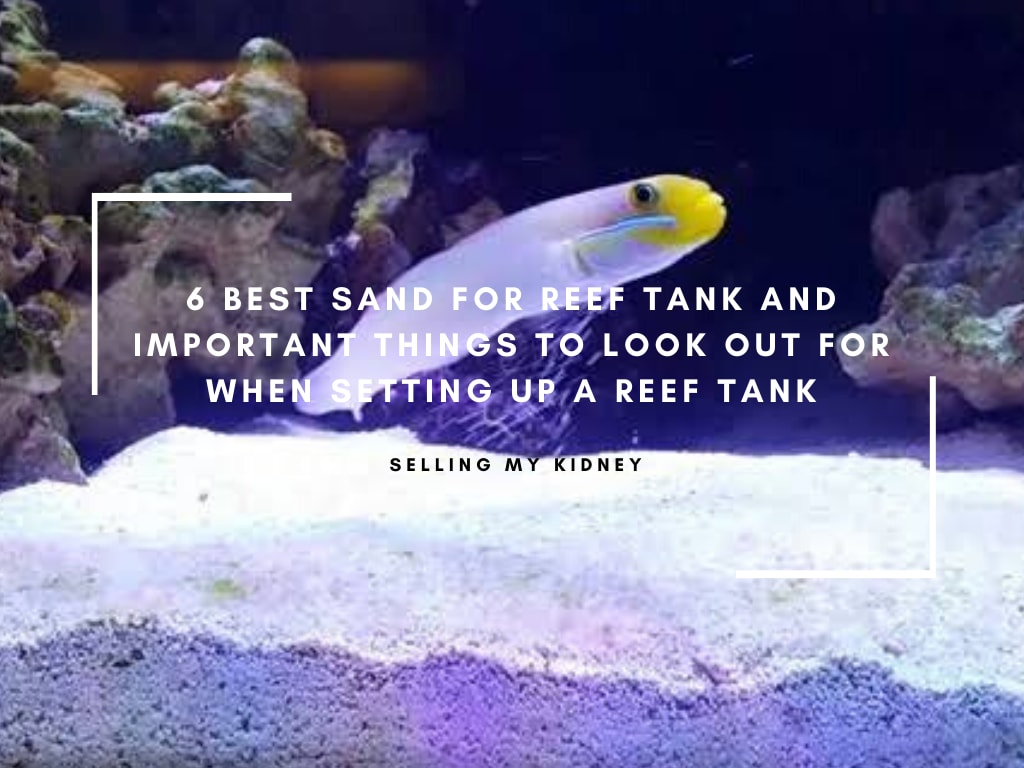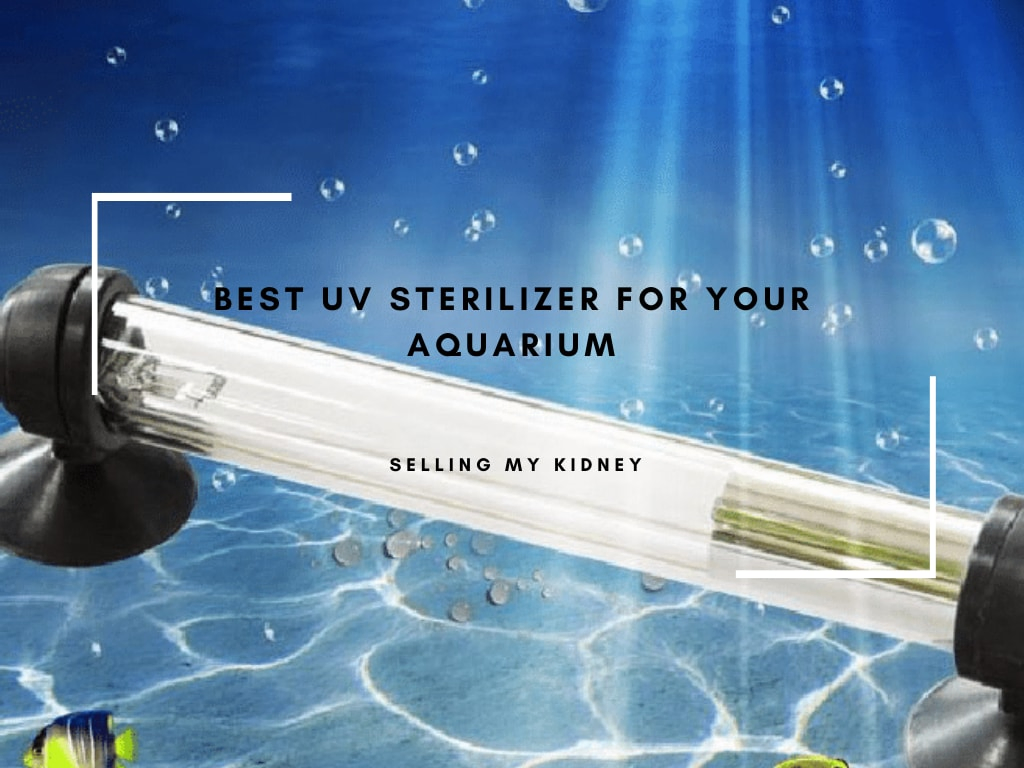A reef tank is a marine aquarium where you can display live corals and other marine invertebrates. However, maintaining a coral in your aquarium might be difficult. Reef tanks require appropriate lightning, turbulent water movement, and more stable water chemistry than an ordinary tank.
The sand plays the most important role in a reef tank. It creates an environment that mimics the natural ocean habitat by using sand from the ocean floor. It has to be colonized with the right mix of beneficial bacteria just to help your coral thrive.
Choosing the best sand for reef tanks might be difficult just because they can affect coral’s health and water mixture. As we mentioned, every reef tank requires a steady water mixture all the time. This means that the sand has to act as a natural filter and promote beneficial bacteria growth.
The best thing is that if you choose the best sand for a reef tank, it won’t need changing frequently or at all.
Let’s browse some of the products and find out which is the best sand for a reef tank.
Name of Product | Type | Rating | Price |
|---|---|---|---|
Live Sand | |||
Live Sand | |||
Live Sand | |||
Crushed Coral | |||
Crushed Coral | |||
Crushed Coral |
Product Review
1. CaribSea Arag-Alive Fiji Pink Sand – Best Live Sand

Providing beneficial bacteria in your reef tank is the most important thing to help your coral thrive. That is why the Fiji Pink sand from CaribSea is excellent sand for your reef tank. It is packed with millions of good bacteria before you even place it in your tank.
Setting up a reef tank is complicated at first sight, just because you can easily run into problems with the cycling time that every new setup needs. This is why Fiji Pink has autotrophic, heterotrophic, and chemolithotrophic bacteria just to aid in waste reduction and reduce the cycling time of your tank.
The sand is also a natural filter that acts as an ammonia reducer, biological filter, and nitrate filter all in one. It is perfect for maintaining a healthy reef environment.
It is also beautiful, so you would not need an additional substrate to enhance the beauty of your reef tank. The surface area is perfect for colonies to adhere to and contains beneficial elements like carbonate, calcium, and trace elements. This will make sure your pH levels in the water are balanced, and you don’t need any additional chemicals.
The best thing about the Fiji Pink sand is that it does not need to be replaced. This will spare you from a lot of work.
2. Nature’s Ocean No.0 Bio-Activ Live Aragonite Live Sand – Most Beneficial Bacteria

Live sand made from aragonite, is the most popular option for reef tank owners, and there is a good reason for that. Other sand products can contain silicates, which can cause algae problems in your tank. Fortunately, there is a lack of silicates in live sand made from aragonite.
You can also use aragonite sand for freshwater tanks.
Just because maintaining the right water balance is essential, Nature’s Oceans live sand is a mix of live bacteria that works instantly to remove harmful ammonia and nitrates from the water. This will ensure you have healthy pH levels all the time.
Just like the Fiji Pink Sand, it contains more than 10 million Heterotrophic bacteria in each pound. Nature’s Ocean live sand also guarantees instant cycling, so you will be able to add fish and coral instantly in your reef tank.
Many people claim that their tanks stabilized after they introduced this product in their aquarium. You don’t have to worry about the looks, just because this sand substrate will make your aquarium look great.
3. CaribSea Ocean Direct Substrate – Best Manufactured Method

CaribSea is excellent sand for your reef tank. They use the specialized method with their Ocean Direct substrate. Just to make sure you provide all the beneficial bacteria and pH level balance, they coated each sand with bacteria straight from the ocean.
It is sealed with a thin film of ocean water, which remains open to the air to have continuous gas exchange. This is a great way to promote beneficial bacteria growth without harmful build-up.
The best thing is that each bag of substrate comes with a clarifier to quickly get free-floating bacteria to the rocks, sand, or other biological filtration systems. This way, your tank will be ready in no time, so you don’t have to wait for the cycle to finish.
4. Carib Sea Seaflor Special Grande Reef Sand – Budget Choice

If you are searching for a natural substrate for your reef tank, the Special Grade Reef sand, I perfect for the job. To create the best environment for the corals and fish in the aquarium, you need to have a perfect balance of bacteria and minerals in your tank.
This particular sand is collected from pure ocean water, not like any other sand that is collected from beaches. It is designed in a way to improve the water balance and create a perfect reef-friendly environment.
pH levels are critical in a reef tank, and the Carib Special Grande sand provides an ideal balance. It will keep the water ph level at 8.2, so you wouldn’t need to add any more chemicals.
The growth of beneficial bacteria is also crucial for building a healthy reef-friendly environment. The good thing is that for every pound of this sand, you will have over 10,000 square inches of surface area where beneficial bacteria will grow.
This is important for controlling ammonia, nitrate, and other waste that can affect the water balance.
5. Carib Sea Florida Crushed Coral Substrate – Best Crushed Coral Substrate

This is one of the most high-quality coral substrates for a reef tank. It contains aragonite, which means it provides more than 25 times the buffering power of ordinary crushed corals. Also, it provides maximum surface area for beneficial bacteria growth. Crushed coral was once the best substrate for a saltwater tank.
The best thing is that once you put it in your tank, you don’t have to replace it. It will provide good pH balance keeping the water above 8. The only drawback for this substrate is that it can cloud the water, so you have to wait for it to settle, and you have to rinse it, even though they say it is not necessary.
However, aragonite allows an increase in bioload by up to 50%. It is also an excellent looking substrate, and your fish will appreciate it.
6. Tropic Eden Aragavive Reef flakes – Wide Range of Options
This is Tropical Eden’s latest creation of their new Aragavive live aragonite sand. You can find four different flavors of this substrate, depending on how to find or how large you like your substrate. Grain sizes are from 0.5mm to 3.5mm.
It is hand collected from offshore, remote islands and packed to keep all the good stuff in it. Tropic Eden mesoflakes offer a wide range of beneficial bacteria that can be found in natural coral reefs sand beds and are boosted with symbiotic marine bacteria and microbes to improve nitrification even more.
It is also perfect for maintaining an excellent water balance and creating a reef-friendly environment. However, it is essential to know that the Aragavive line is a bit more expansive than other live sands on the market, and from this point of view, it is hard to understand why.
What to consider when buying a substrate for a reef tank?
Choosing the best sand for a reef tank can be tricky just because everyone claims to be the best for the reef. Before you go and buy your substrate, you need to know the purpose of the reef substrate.
Reef substrate has a number of different functions in your aquarium.
- - First of all, it is an aesthetic appeal and has a significant impact on the look of your aquarium.
- - The surface area for biological filtration as helpful bacteria needs a firm surface to grab onto.
- - It is for burrowing or sand-sifting creatures
- – Creating a reef-friendly environment
Dry Sand Vs. Live Sand
Live sand is actually alive with billions of organisms and bacteria. If you put live sand in your tank, you wouldn’t need to populate your tank wit bacteria and organisms as it will do the job for you. These bacteria help dissolve a variety of harmful waste compounds, such as nitrates or ammonia.
Live sand is probably the best substrate for a reef tank.
On the other hand, dry sand does not come with millions of bacteria ready to be put in your tank. This type of sand does not contain any living organisms in it. This can be good when cycling your new reef tank. Even the best dry sand for a reef tank cannot be put in the water without the cycling of your tank.
Every aquarium needs beneficial bacteria growth to build a healthy environment for the fish. The dry sand needs several weeks to cultivate bacteria in your sand by cycling the tank. On the other hand, live sand ships wet just to keep the bacteria alive. This means that you don’t need to wait for beneficial bacteria growth.
More: Best Substrate for Betta Fish
How Much Maintenance Are You Willing To Take on?
Reef tank maintenance can be a huge deal when it comes to choosing the best sand for a reef tank. There are different types of sand beds, and all require a different kind of maintenance, which is why you have to choose the substrate that you are most comfortable with.
Just like we mentioned before, sand beds contain live beneficial bacteria that help you maintain a healthy environment for all creatures.
It is crucial to determine what kind of maintenance you prefer before you buy your sand, or otherwise, it is going to be a problem in the future. For example, if you are planning on using suction-based sand cleaner, it is essential to clean your entire bed routinely to avoid losing helpful bacteria.
If you want to go for a much easier option, you can choose larger grain size sand, which is easier to clean and does not cloud the water.
To make your job much easier, you should have cucumbers, snails, or gobies that can do the job for you. If you choose this method, you have to compromise the looks of the bottom of the tank, to maintain steady water chemistry.
More: The Best Hung-On-Back Filter For Your Aquarium
What Creatures Are In Your Aquarium?
The substrate you choose has a significant impact on different types of fish. You have to be aware than not every substrate goes along with all fish types. This means that you have to determine what type of creatures you want to keep in your aquarium before you buy your substrate.
For example, some fish can see the substrate as food, and to avoid the choking hazard, you should go for a soft or fine-grained substrate.
You have to know that everything in your fish tank is connected. This means that there is no strict about maintenance or feeding. It all depends on the type of creatures you have. As we mentioned before, if you have cleaning creatures like sea cucumbers or snails, you can go for fine-grained substrate, as it would require little maintenance.
More: The Best Aquarium Wave Maker
What Kind of Look do You Want?
The substrate in your reef tank plays a vital role in the visual impact of your aquarium. Choosing the best send for reef tank will give your aquarium that “wow” factor, and even make your creatures stand out in the aquarium. There are different colors and styles to go for, and finding the right one is entirely up to your taste.
Frequently Asked Questions
How much sand do I need for my reef tank?
You must set up your tank the right way to avoid future problems. The depth of the sand bed is a critical factor that might affect the water mixture over time. That is why you need to know exactly how much sand do you need.
To know how much sand to buy for your aquarium, you need to know the depth of the sand bed you are aiming for, as well as the dimensions of the bottom of the tank.
There is also an easier way of calculating the amount of sand using the tank’s volume. Every tank has a different volume measured in gallons. The amount of sand per pound that is enough for your tank is roughly equivalent to the gallons of your tank. So, if you have a 15-gallon tank, you’ll need 15 pounds of dry send for a one-inch bed.
When it comes to the depth of the sand, you can go for a shallow bed which is ¼” to 2”, or deeper sand bed between 3 1/2” to 6”. The depth of the sand plays important role in the maintenance of the tank as well as water chemistry.
Shallow sand beds have oxygen throughout, so to avoid nitrogen build-up that can affect water chemistry, you need to clean the substrate at least once a month.
However, things are a bit different when it comes to deeper beds. Just because there is no oxygen at the bottom of the sand bed, it allows bacteria to facilitate denitrification. In other words, the tank is auto-correcting itself and keeping the nitrogen balance at an optimal point.
That is why deeper sand beds require little to no maintenance. The best option to go with if you want a shallow sand bed is lower than 2” or larger than 3 ½ inches for deeper sand bed. Anything in between is not suitable for your aquarium since it is allowing toxic chemicals like hydrogen sulfide to build up into the tank water.
Is crushed coral good for a reef tank?
Crushed coral is a mix of limestone, coral skeleton pieces, and shells. This substrate was very popular a few years ago for saltwater aquariums.
It comes in a variety of different sizes. If you go for a large grain size, you will have a very high flow, which is good for reef tanks. However, small grain-sized crushed coral can be disturbed by a strong flow clouding your water.
On the other hand, large grain sizes of crushed corals are not good just because you will have uneaten food, and dirt can be trapped beneath the surface. To avoid breaking down your water mixture, you need to clean it regularly.
The other drawback of the crushed coral substrate is that you will not be able to get sand-sifting animals, which can make your maintenance much easier.
Yes, you can use crushed coral as your substrate, but it is a sort of outdated feature, and you will probably be better off going with sand substrate.
More: Best Substrate For Goldfish
How to keep your sand clean in a reef tank?
You have to understand that reef sand is not like ordinary sand you put in other aquariums. You should not mix it up or clean it that often just because it can affect the water mixture.
You can add some creatures that will be responsible for cleaning it, such as shrimp, gobies, or jawfish. However, you need to research the animals before putting them together, just because not every creature can live alongside others peacefully.
If you have a deep substrate, it is important to maintain the surface. You can do that by using an aquarium vacuum or siphon, just to clean any debris or leftover food.
Conclusion
Going for a reef tank is a popular option, but as you can see, it requires certain things to work out well. To create the ultimate healthy environment for all creatures, you need to have a perfectly balanced tank.
That is why the substrate is very important. We reviewed some of the best sand for a reef tank, and each option will provide everything you need. However, CaribSea Arag-Alive Fiji Pink Sand is the obvious choice, just because it has live bacteria, doesn’t need replacement or cleaning, and you won’t have to wait for the cycling time. Plus, it looks impressive and will keep your water balanced all the time.




![The Best LED Lighting for Reef Tanks [With Buying Guide] 6 LED Lighting for Reef Tanks](https://animalfella.com/wp-content/uploads/2020/04/LED-Lighting-for-Reef-Tanks.webp)


![The Best Corals for Reef Tanks [Complete Guide] 9 Hammer Corals](https://animalfella.com/wp-content/uploads/2020/07/Hammer-Corals-1024x693.webp)
Pingback: Your Guide to a Peacock Cichlid - sellingmykidney.com